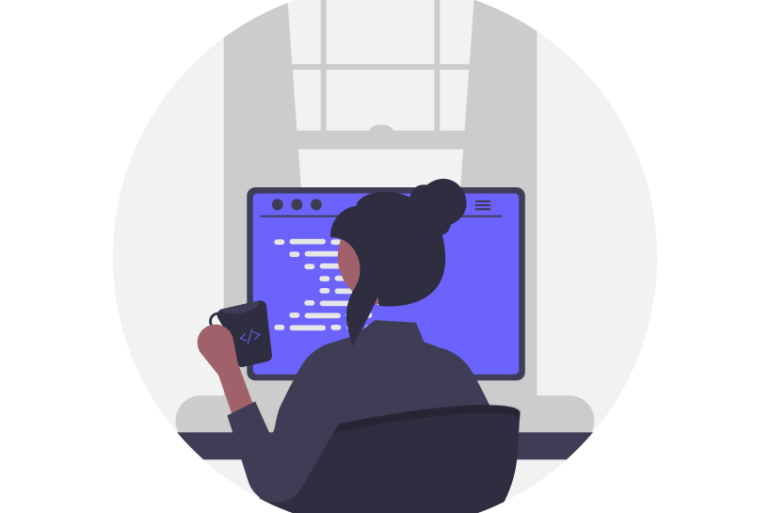What is Python?
Python is a general-purpose programming language that has its applicability pretty much anywhere that deals with data, mathematical computation or lines of coding. With its dynamic semantics and high-level built-in data structures, which are combined with dynamic typing and dynamic binding, the programming language appears more attractive for Rapid Application Development and for use as a scripting language to connect existing components together. The simple and easy-to-learn syntax of Python language emphasizes readability and thus reduces the cost of program maintenance as well. Python being an interpreted language, the interpreter and the extensive standard libraries are available in the source or binary form which are freely distributed across all major platforms.
Rise of Python
Python is most popular among programmers because of the increased productivity that it provides. There is no compilation step in the language, due to which the edit-test-debug cycle as compared to other languages is incredibly fast. Also, debugging a Python program is easy. A poor input or a bug will never result in a segmentation fault error as what happens with another high-level programming language. Instead, when an interpreter discovers an error, it raises an exception and when the program is unable to catch the exception, the interpreter prints a stack trace. In this language, a source-level debugger allows inspection of both local as well as global variables, setting breakpoints, evaluation of arbitrary expressions, stepping through the code line-by-line and so on. Testifying to the language’s introspective power, the debugger is written in the Python language itself. Also, to debug a program in the quickest way possible, adding a few print statements to the source works best. The edit-test-debug cycle due to its quick action makes Python even more popular among programmers.
Also, Python is one of the most popular languages in the world today due to the versatility that the language provides to beginners. This language can be used for building both web and desktop applications. The reason why Python is more popular among beginners is that this language has the simplest of syntax and is easy to understand as compared to other Backend programming languages. Also, Python is an open-source language, dynamically typed and an object-oriented language.
How to use Python?
Python is a versatile programming language that can be used for simple few lines of code to very complicated business-level coding. For anyone from casual coders to Corporate Software Programmers, Python is a viable and most accessible programming language. From small tasks such as powering a moderator bot to extremely complex tasks such as analyzing massive loads of financial data for any fund disbursement, Python can be made to work.
Python being a scalable language, any Python-based application is capable enough of maintaining its same coding structure even if a small-scale startup company flourishes into a high-rise corporate company. Python is a language well known for its far-reaching applicability that scales beyond web development coding. Here is a list of a handful of ways wherein Python scales beyond web development coding.
- Machine Learning
Python’s code is capable of implementing a Machine Learning program which helps the algorithm-based technology refine from voice recognition to content recommendation.
-
Data ScienceThe Data Science field makes up a sizeable user base of Python language both for its computing and compiling tasks of data libraries and related fields.
-
Data MiningPython’s scalability, versatility and nimbleness also make it the best programming language to process and mine big data, which has gained a lot of importance in the financial sector.
Advantages of Python Language
Python being a general purpose, interpreted, high-level, dynamically-typed, versatile, object-oriented and functional programming language has got many advantages to its name. Here are a few of the big advantages that Python language has: –
-
Simple SyntaxThe reason why Python is most popular among beginners is due to its simple syntax format. The Python programming language has an easy-to-learn and understand syntax that makes use of English words.
-
ReadabilityThis versatile language along with a simple coding style has also got lines of code which are easy to read. For instance, Python when is about to complete a command makes use of a nice and clean break in the form of a new line of code rather than using semicolons or parenthesis.
-
ScalabilityPython also gives its users a scalability advantage as while writing programs in Python, the programmer without having to worry about the difficult task of rewriting or adapting code for other platforms can simply start writing a program.
-
Popularity and accessWith years of Python dominating the programming field, the Python community has increased manyfold which helps maintain its accessibility to any skill level. Also, Python software is free and open-source software that makes it easily accessible to any programmer.
Use of Python Language
Python is an open-source language, dynamically typed and an object-oriented language which can be used to: –
- Build web and desktop applications,
- Build mobile applications and games,
- Quick automation,
- Cross-platform shell scripting.
It isn’t that Python has just got advantages to its name. Python as a programming language also has some disadvantages. For instance, Python features a line-by-line execution style due to which its computing speed is often slower as compared to other programming languages. However, the list of advantages that the Python language has nearly outweighs its disadvantages. If you wish to get to know more about Python programming language and want to learn how to code in Python, do visit the DockLearn website.





